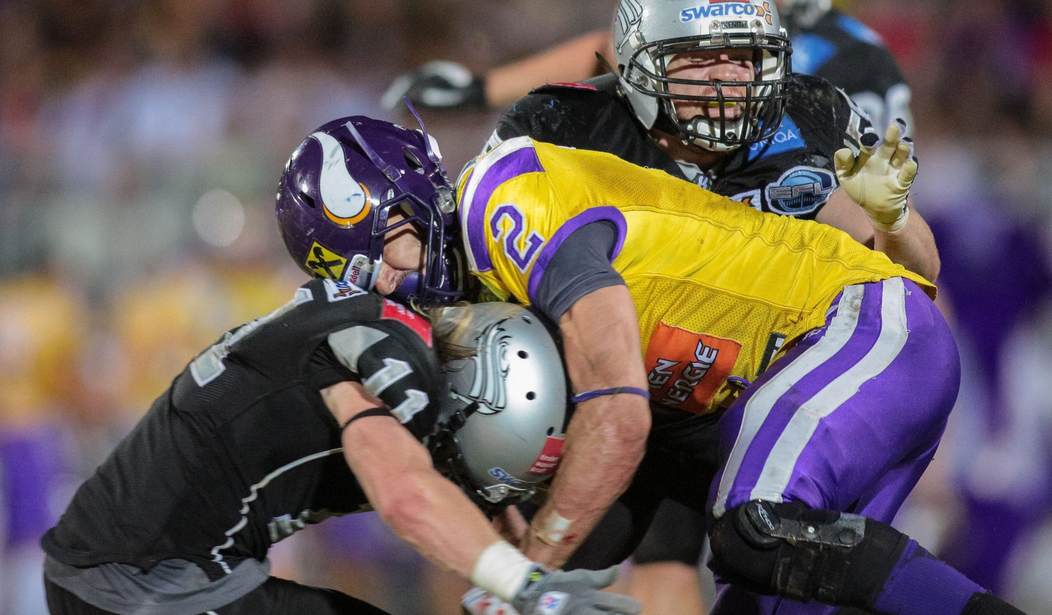When I was young I was quite good at sport, but I never improved at it much because I couldn’t take it seriously enough: my competitive spirit must have been deficient. Sport was always said to be good for the character, but I never noticed that the best sportsmen had the best character: if anything, they seemed to have one rather below average. Much later I learned that sport was the single most common cause of injury.
Oddly enough, sport in general has never as a result been the object of medical disapprobation. Certain sports, on the other hand, have attracted strong disapproval, with medical calls either for modification of rules or outright prohibition.
On two successive weeks, the British Medical Journal and the New England Journal of Medicine turned their attention to boxing and American football, respectively. The BMJ ran a for-and-against feature about boxing, while the NEJM had an opinion piece about the risks for young people of tackling in American football.
The argument against boxing was forthright. “Boxing,” it said, “is little more than state condoned assault that should be banned immediately.” The authors quoted figures that were alarming. Of 907 professional fights in Australia, 177 resulted in 214 injuries. There was one death. Most of the injuries were slight, however, 61.7 percent of them wounds or lacerations to the head.
The authors stated also that between 1983 and 2007 there were at least 120 deaths from boxing worldwide, but at 4 deaths a year, this hardly seems a major public health problem. Longterm consequences of boxing include dementia pugilistica, however, a form of traumatic encephalopathy. In the days when boxers fought every few weeks, 17 percent of them suffered it in the end; the proportion nowadays is almost certainly lower, because boxers fight far fewer times in a career. But the authors claimed that the fact that the aim of boxers is to inflict hurt or injury on their opponents made any injuries caused by boxing morally unacceptable.
Those who thought that boxing should be permitted pointed out that boxing is not the most dangerous sport: both horse-racing and parachuting have death rates about 16 times higher than professional boxing and 90 times higher than amateur boxing. Rates of concussion among American footballers of the NFL are 70 percent of those among professional boxers. The authors claimed that suppression of boxing would result in clandestine and unregulated fights which would be far more dangerous.
The author of the article on tackling in American football begins: “At least 11 U.S. high-school athletes died playing football during the fall 2015 season.” But she also points out that there are many other injuries, mainly from tackling, such as concussions. If these are repeated, they have bad long-term consequences.
Children, she says, are not able to make fully informed decisions about the risks of injury. The American Academy of Pediatrics believes that the problem should be dealt with by ensuring adult supervision of games, more coaching of players so that they tackle better, that physical therapists should be employed to increase the strength of the neck muscles of the young players and that certified trainers should be present at all games.
The author says, “It is understandable that the AAP has promulgated policy recommendations that seek to minimize the harm of tackle football as it is currently played, given the cultural predominance of football in the United States.” By “understandable” I suspect she means “cowardly.”
Perhaps the only answer to injury in sport is to ban it altogether. Then the emergency departments of hospitals could get on with their real work, which is to say attending to drunks and drug-addicts.









Join the conversation as a VIP Member